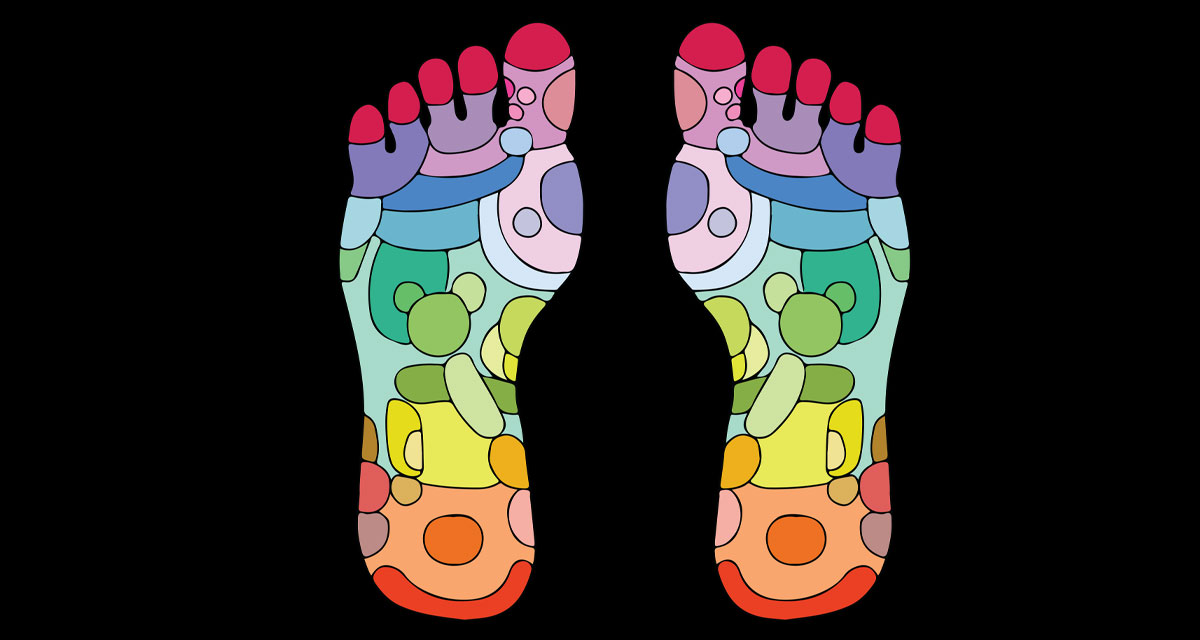The feet are the carriers of the body. After walking on various surfaces, even though our shoes are well padded, it’s often satisfying to sit, elevate the legs, and relax. The simple act of elevating a foot and applying pressure on different acupoints can return the body to optimal health, or even cure disease. For thousands of years, the practice of reflexology has facilitated energy flow in 15 points on the foot, while eight alleviated pain.
What is Reflexology?
As people choose an alternative for prescription medications, a holistic option can prevent, manage, and treat ailments. The solution is a zone therapy, termed reflexology. As pressure is applied to a particular reflex or zone, the associated nerve will send signals to a specific organ, limb, gland, or system. While it may sound similar to massage, a reflexologist engages in stimulating your body’s natural healing power to repair itself.
The benefits are:
- Increased Blood Circulation: Applied pressure forces the blood to circulate, reaching vital organs. In receiving oxygenated blood, the body can eliminate toxins and regrow contaminated or damaged cells.
-
Eliminated Toxins: As blood circulation increases, the body can flush out toxins and improve bladder function.
-
Improved Nerve Function: Each pressure point is a nerve. Through stimulation, it boosts brain functioning, information flow, memory, and cognitive reactions.
-
Reduced Tension-Based Symptoms: The power of touch creates a relaxing environment that also aids those who suffer from headaches and migraines, stress and anxiety, and sleep deprivation.
The Foot is a Guide Map
The foot is a road map, divided into five longitudinal and transverse zones on each side of your body. It begins at the tip of each toe and runs up to the top of your head. A transverse zone, similar to a line of latitude, corresponds to areas of your head, neck, chest, abdomen, and pelvis.
Reduce Stress & Menstrual Pain: On the top side of your foot, place your thumb between the big and second toe, where the tendons meet. Apply deep and firm pressure for five seconds.
Hot Flashes & Night Sweats: Find the fleshy point directly below the second toe, aptly named Bubbling Springs Point. Firm pressure aids symptoms associated with perimenopause by calming anxiety, hot flashes, night sweats, and insomnia.
Eliminate Headaches & Dizziness: Pressure right below the big toe joint and second toe (point KD 1) will open the sensory orifices to aid blurry vision, ringing ears, sore throat, and headaches. Continue the massage for two minutes on each foot.
Body Imbalance: The bony bump on the outside of the ankle identifies the pressure point. Applying pressure can help any feeling of imbalance on the left and right sides of the body, feelings of dizziness, headaches, swelling, or pain in the legs.
Stabilizes Mood: Direct the thumb an inch below the bony bump on the outside of the ankle. Use massage on this point to reduce mental stress.
Stomach Aches & Dizziness: Below the inside nail of the big toe is the pressure point. Hold firmly for five seconds on each foot.
Gastric Issues: In helping to relieve the body from constipation, diarrhea, vomiting, and sluggishness, use the acupressure point found by pressing on the inner foot at the depression area (beginning of the curve) down from the big toe. Start for three minutes. As hunger pains arrive, increase the time.
Respiratory Difficulties: Feel between the Achilles tendon and the bony bump on the ankle. Pressure here helps alleviate numerous symptoms, from relieving toothache and sore throat to breathing issues, such as bronchitis and asthma.
Ease Labor Pains: With a thumb and index finger, firmly pinch the outer edge of the pinky toe, where the nail bed starts. Women have found that this eased the pain during the first stage of labor.
Tip: For self-therapy in reducing labor pain, apply gentle pressure on the webbed skin between the thumb and pointer finger, directly below the knuckle. Massage for a minute, wait; then, repeat.
Since reflexology is an ancient practice, its origin and history are difficult to track; however, a pictograph with hieroglyphics etched on papyrus, estimated from the year 2330 BC, illustrates the value of hand and foot reflexology. With the later arrival of detailed charts of the feet and hands, holistic therapy continues to restore the body.























